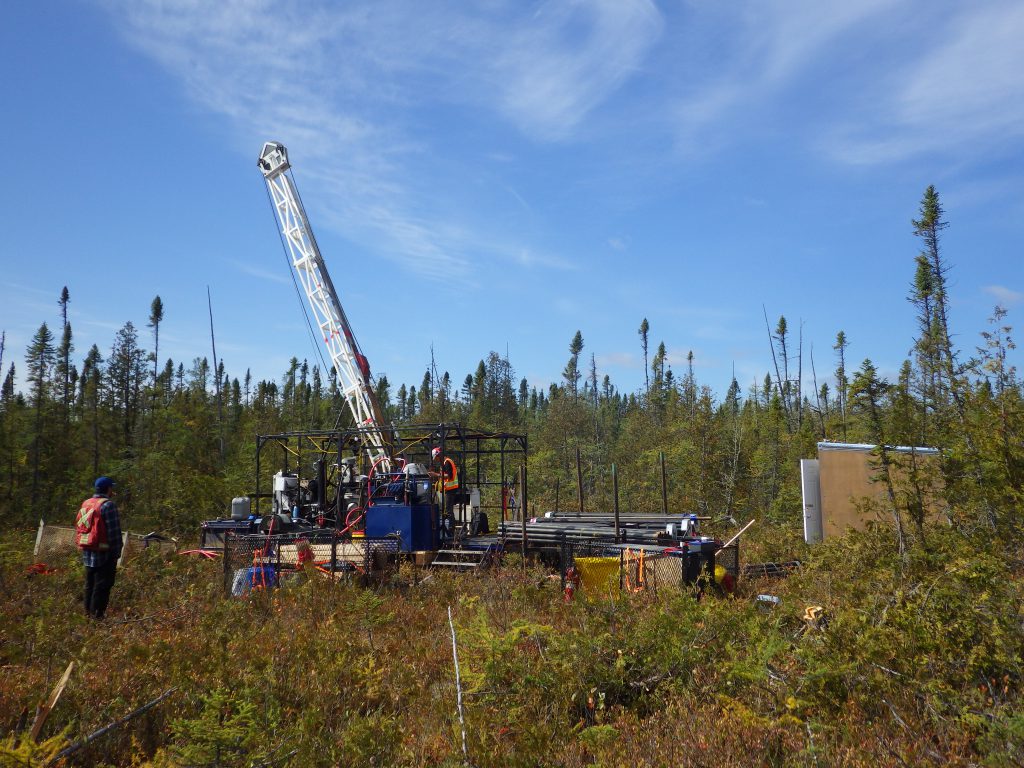VR drills 299.53 metres of 0.47% TREO at Hecla-Kilmer, Ontario

VR Resources Ltd. [VRR-TSXV; VRRCF-OTC; 5VR-FSE] has provided new data from the first of five holes completed in October at its 100%-optioned Hecla-Kilmer (H-K) project 35 km southwest of Ranoke, northern Ontario. A 299-metre intersection in drill hole HK21-005, starting near surface, confirmed the discovery of a new and large-footprint rare earth element (REE) and critical metals system at H-K.
Total rare earth oxides (TREO) average 0.47% TREO over 299.53 metres starting near surface at 52 metres hole depth, just 8 metres below the base of till, and include TREO up to 1.70% over 3 metres from 156 metres, within 28 metres of 0.80% TREO starting at 152 metres with Middle and Heavy rare earth oxides (MHREO) of up to 0.18% over 3 metres at 152 metres.
Concentrations of the critical metal niobium of 0.20% niobium (Nb2O5) over 237.46 metres, including 55 metres at 0.23% Nb2O5 and 25.4 ppm Tantalum (Ta2O5) from 183 metres and 31 metres at 0.31% Nb2O5 and 33.4 ppm Ta2O5 from 275 metres.
H-K is Confirmed as a new REE and Critical Metal System in Canada
The new data from drill hole HK21-005 confirms the discovery of rare earth elements (REE) and critical metals, for example, niobium and lithium, by the first round of reconnaissance drilling in 2020. Drill hole HK21-005 confirms a strengthening of the mineral system within the main gravity anomaly.H-K is Confirmed as a new REE and Critical Metal System in Canada
Drill holes 002 and 004 are 200 metres apart, with mineralization at surface and spanning more than 500 vertical metres. Drill holes 002 and 004 are 200 metres apart, with mineralization at surface and spanning more than 500 vertical metres;
Mineralization in Hole 005 spans 299 metres of drill core through the central and eastern part of the gravity anomaly which itself measures 400 x 800 metres in size;
Mineralization observed in drill core and evident in XRF mineral scans in Holes 008 and 009, for which geochemical data are not yet in hand, are separated by approximately 1,000 metres along the long axis of the gravity anomaly.
Dr. Michael Gunning, CEO, said, “These new data confirm and expand upon the potential significance of the REE and critical metal component of the hydrothermal breccia system at H-K as first discovered in our reconnaissance drilling last year. Despite the very early stage of our drilling, four different styles of mineralization are evident at H-K: 1. REE + Nb in veined and brecciated carbonatite dykes; 2. lithium mineralization in hydrothermal breccia; 3. copper sulfide in veinlets with iron and silica, and; 4. elevated secondary gold in porphyry dykes.
Of these, it is already clear that the REE + Nb component of the hydrothermal system at H-K has significant potential value based on: 1. the vertical and lateral scale represented by the early intersections; 2. the polymetallic signature including niobium, light and heavy rare earth elements, and; 3. TREO concentrations over a 299-metre intersection are similar to the average grades reported for many REE deposits globally, bolstered by a niobium signature.”
The Hecla-Kilmer complex is 35 km southwest of the company’s Ranoke property and 23 km northwest of the Ontario hydro-electric facility at Otter Rapids, the Ontario Northland Railway, and the northern terminus of Highway 634.
